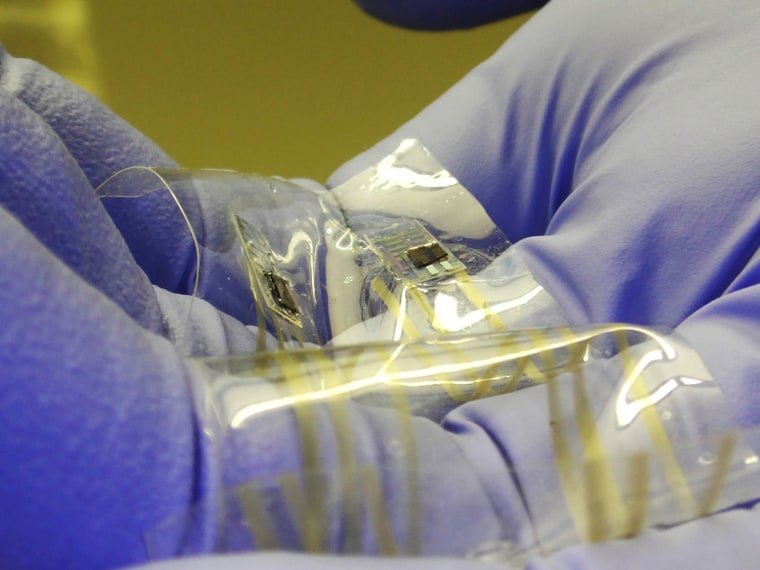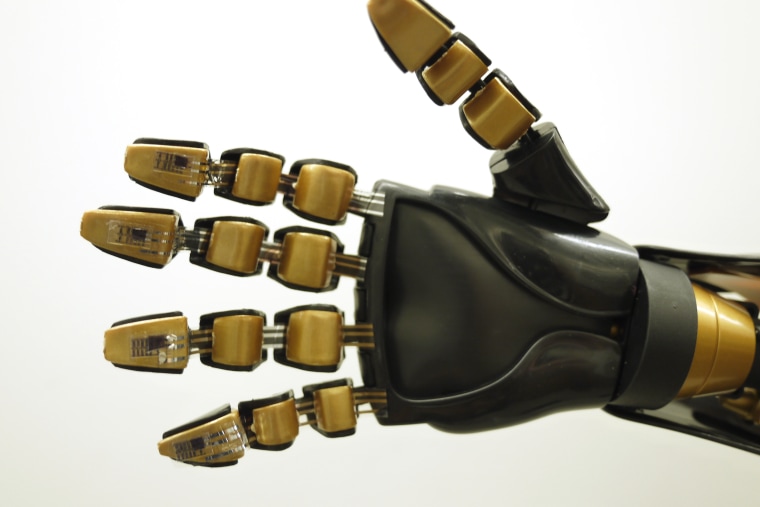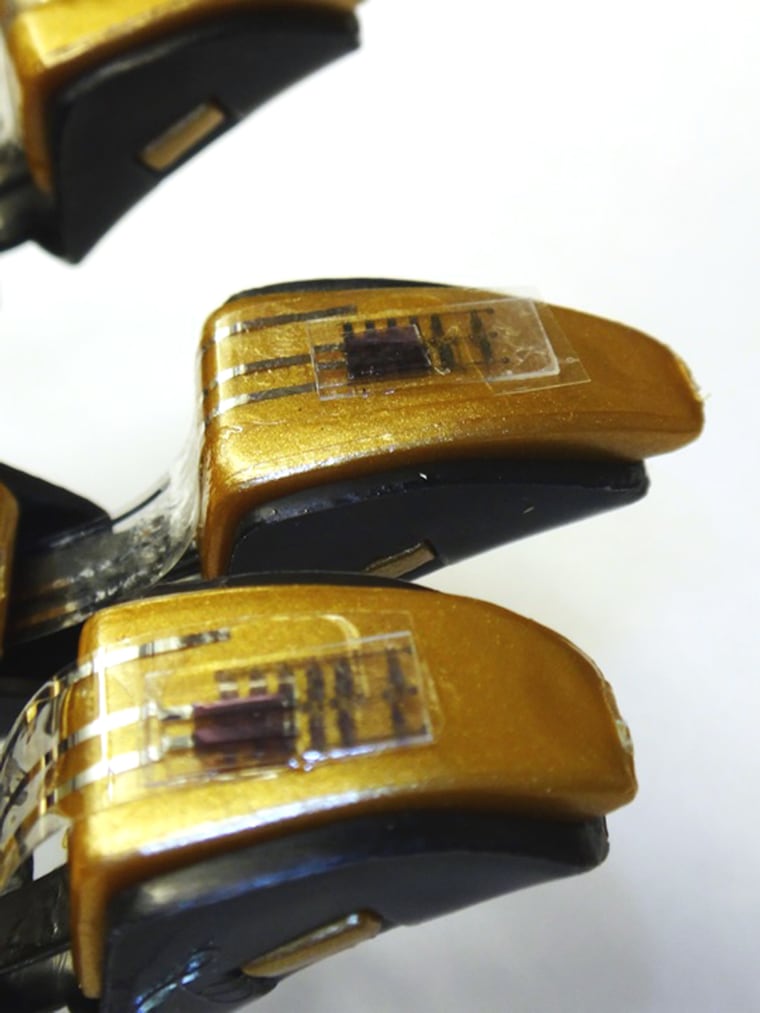Researchers have developed a thin artificial skin that they hope could be used to help amputees feel what they’re touching with prosthetic hands or limbs.
It’s an unusual combination of a stretchy, rubber-based plastic and carbon nanotubes, with electrodes applied using an inkjet printer. It translates the pressure of a touch into a digital signal, the researchers report in the journal Science.
“It’s skinlike in its functions,” said Zhenan Bao, a chemical engineering professor at Stanford University who led the study team.

Bao and colleagues took the idea a step further and used a new approach called optogenetics to send that signal directly to brain cells — in this case, cells taken from mice. Optogenetics involves using light to control a cell, and the approach has been used to control mouse behavior with the actual flip of a light switch.
It’s far too early to try something like that in people, Bao said. For one thing, it involves genetically engineering the mice.
But the thin skin could be connected to a more standard electrode, she said. What’s new is the delicacy of the sensor. “Some people have made pressure sensors but they have not been able to generate an electrical signal that can communicate with the brain,” she said.
Their approach adds to a growing field of research aimed at making artificial limbs not only work better, but feel more lifelike to their users.

Last year, a team at Case Western University reported on a system they developed for clipping a prosthetic hand into surgically implanted electrodes on a patient’s forearm. It allowed users to feel what the fingers were doing.
Other teams have tried weaving the electrodes in among the nerves of the arm to allow the prosthetic to transmit signals that approximate touch.
The next step would be wireless transmission of signals, to cut down on the trail of wires that patients would need to have implanted.
The end goal is to allow people to control prosthetic devices with thought alone, and to manipulate objects with better dexterity. And the feedback helps conquer the phantom limb pain that plagues some people after amputations.

Polina Anikeeva and Ryan Koppes, bioelectronics experts at the Massachusetts Institute of Technology, said the optogenetics approach could aid in getting rid of the wires.
“By optogenetic decoupling of the sensory and motor pathways, future prostheses can be integrated with minimal invasiveness, avoiding the need for convoluted wiring and establishing direct feedback from an artificial limb to the brain,” they wrote in a commentary in Science.
“They may enable prostheses that deliver a sense of touch.”
